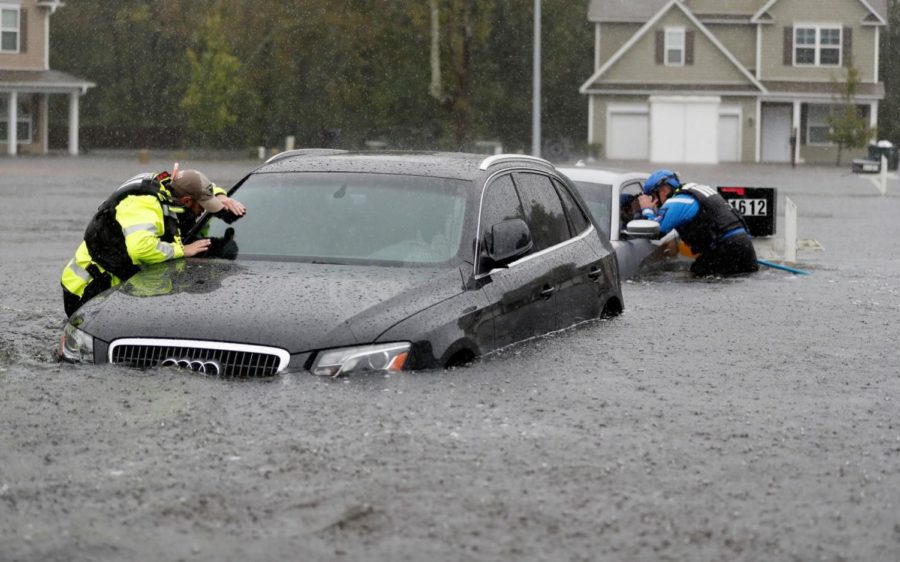The Aftermath of Hurricane Florence
October 1, 2018
This past weekend in Southern California, warm temperatures and clear skies were found as far as the eye could see, yet that was the complete opposite for residents along the Eastern Seaboard, and the Carolinas in particular. Hurricane Florence made landfall late Thursday night along the coast of the Carolinas as a category 1 hurricane, a decrease in the initial category 4 it had been predicted as.
This formidable storm weakened a bit as it made its way inland, but not before leaving a path of destruction in its wake.
Like with most hurricanes, the coastal cities of Wilmington, New Bern and all of the Outer Banks region of North Carolina as well as Myrtle Beach and surrounding cities, a little farther south in South Carolina took the brunt of the impact.
The coastal town of Wilmington was hit especially hard by Florence, with over 23 inches of rain alone and powerful wind gusts over 100 miles per hour. That wasn’t even the worst of Florence’s fury onto Wilmington; the low lying coastal city was flooded so badly that it became isolated from the rest of the state. Flood waters rose so high throughout the town, making it completely surrounded on all sides by water, and all roads entering and exiting the city were either too flooded to pass through or had crumbled due to the water damage, as many roads across the region did.
Inland cities weren’t immune to Florence’s damage either. Cities as far as 100 miles inland in North Carolina faced flooding due to the downpours of rain that persisted in the region for the entirety of the weekend as well as intermittent power outages. Farther north in Richmond, Virginia, Florence spawned tornadoes as the storm made its way up the East Coast. Over a million people faced power outages related to the storm and some residents in the hardest hit regions still remain without power, 5 days later. Damage to infrastructure was present throughout the Carolinas as rising water caused the collapse and sinkholes to destroy thousands of roads, power lines fell, and thousands of homes and businesses were damaged from the unrelenting wind and rain faced over the weekend. Unsafe conditions essentially shut down the state of North Carolina altogether, with schools and businesses closed for much of this week due to danger, prompting the governors of both North and South Carolina to declare states of emergency. The immense amount of damage will take weeks, maybe even months to clean up and return to normal.
Tragically, the damage exceeded homes and infrastructure and claimed the lives of 36 individuals as of Tuesday; however, that number could potentially rise in the days to come. Due to the number of the rural and farm communities throughout the region, many animals such as pigs, horses, and cows succumbed to the rising flood water.
As if the damage from the floods itself wasn’t enough, despicable people preyed upon some of the evacuated and hard-hit areas and looted stores and homes, taking advantage of victims of this ferocious storm.
Due to the inaccessibility of many parts of the states, the full extent of the damage may not be realized for the days and weeks to come; however, the results of this disastrous storm will continue to be felt throughout the region for a very long time. First responders and volunteers, even from Southern California, have trekked to the region to assist in the recovery effort and rescue those in life-threatening situations.












